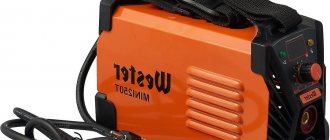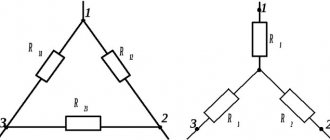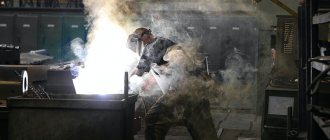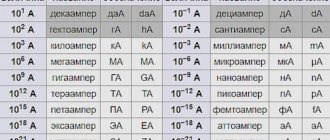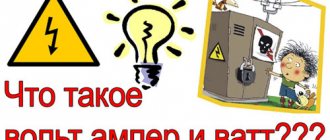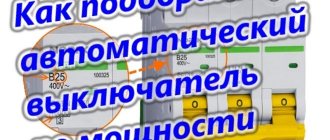Working with a welding machine is a skill that comes with practice. Selecting the right electrodes and welding amperage is considered an equally easy process due to the wide range of electrodes available. It all depends on the type of metal and its mechanical properties. The electrodes work with a specific type of welding power source. Before turning on the welding and starting work, you need to decide on the factors for choosing electrodes and calculating the welding current.
In this review, we will look at the basic principles of calculating current strength when welding with an electrode and consider the theory and recommendations of experts that will help in practice to avoid common mistakes. If you are working with a welding machine with manual settings, pay due attention to this issue. Modern models have an automatic mode.
How welding current for electrodes affects welding
When carrying out the welding process, it is necessary to select the correct current value. It is this parameter that largely influences the quality of the weld.
Low welding current
can lead to unstable arc combustion, the appearance of unwelded areas, the welding process will be constantly interrupted and, as a result, the welder will receive a poor-quality connection.
A value that is too high will result in overheating or burnout in the welding zone, as well as intense spattering.
In general, the choice of voltage indicators is influenced by several factors :
- brand and diameter of welding materials;
- spatial position of the rod during welding;
- voltage polarity (see the peculiarities of constant and alternating welding);
- seam size ;
- method ;
- type and thickness of metals being welded.
Universal table for determining current strength
It is convenient to present the dependence of the amperage and diameter of the consumable on the thickness of the workpiece in tabular form. In this case, the relative position of the parts is taken into account.
For butt joints
The surfaces to be welded are located parallel to each other. Set the following amperage:
| Edge thickness, mm | Consumable diameter, mm | Amperage, A |
| 1,5-2,0 | 1,6-2,0 | 30-45 |
| 3 | 3 | 65-100 |
| 4-8 | 4 | 120-200 |
| 9-12 | 4-5 | 150-200 |
| 13-15 | 5 | 160-250 |
| 16-20 | 6-8 | 200-350 |
| Over 20 | 6-8 | 200-350 |
For corner and T-joints
The surfaces of the workpieces are located perpendicularly. The cross section of the surfacing has the form of a right triangle with a convex hypotenuse. The amperage is set in accordance with the table:
| Seam leg, mm | Consumable diameter, mm | Amperage |
| 3 | 3,0 | 65-100 |
| 4-5 | 4,0 | 120-200 |
| 6-9 | 5,0 | 160-250 |
What current for which electrode
The correct choice of current for welding with electrodes is the key to a comfortable working process, a high-quality weld and the entire product as a whole. For each brand there is a recommended voltage value. This information is written on the packaging of welding materials. You can find approximate figures below.
Welding current for 4 mm electrode
Rods with a diameter of 4 mm are common. Their demand is due to the fact that such consumables are suitable for working with large and small seams. The voltage force when welding with this rod ranges from 110 to 200 A.
Welding current for 3 mm electrode
Welding voltage for consumables with a diameter of 3 mm. should be in the range from 65 to 130 A. Before carrying out work, it is recommended to set the average value to 80-90 A. During the welding process, this will help determine what current is required for welding with a 3mm electrode. is optimal.
Welding current for electrode 2 mm
At 2 mm. a voltage of 30 to 80 A .
The wide spread in values depends on the metal and the chosen spatial position. Important! Please remember that these values are relative. In practice, the current strength depends on the brand. Each brand has its own indicators written on the packaging . Therefore, in order, for example, to find out what current is needed for a 4 mm electrode, you need to familiarize yourself with the manufacturers’ recommendations. Experienced welders may rely on their own knowledge and experience and have some preferences.
Useful video
A short video where a welding practitioner shares his experience of setting the current value. A good tip is to empirically select the current strength from higher to lower.
[ads-pc-2][ads-mob-2]
What nuances should you consider when choosing an inverter?
Immediately you need to make a reservation and say that it is better to choose an inverter with some reserve in terms of current strength.
There are a couple of good reasons for this, namely:
- Firstly, an inverter with a current reserve can be used more flexibly in the future. What if I have to cook with 5 mm electrodes? Then it is necessary that the inverter be at least 250 Amperes;
- Secondly, not all inverters are capable of delivering maximum current. Some models, even if the passport says 200 Amperes, are never able to give 100%;
- Thirdly, the network may have low voltage, and then the inverter power will not be enough.
It is also recommended to look at the exact purpose for which the welding inverter will be used. If its use is limited only to home work, then a device with 160-200 Amps will be more than enough. Why pay extra for unnecessary amps if you never have to use them?
However, you should not choose the cheapest welding inverters in price. The best inverters in Russia today are: Resanta, Svarog, Fubag. Inverters from these manufacturers are distinguished by good build quality, high performance, and operational reliability.
What is the difference between DC and AC electrodes?
The differences between DC and AC electrodes can be briefly explained by two statements:
- Welding materials designed for alternating current are also successfully used for welding with direct current. Therefore, experts often call such electrodes universal. More about them below.
- While DC electrodes are generally not suitable for AC welding.
However, it should be remembered that materials of the second group guarantee a better connection . When performing important work, this fact comes to the fore.
What are universal electrodes
Universal welding materials are
DC and AC electrodes. That is, those consumables that work equally effectively on both alternating and direct voltage. This category of welding materials has several advantages:
- good and stable arc;
- increased work productivity;
- fairly high efficiency;
- low level of splashing;
- good slag separation;
- the ability to weld surfaces that are uncleaned from contaminants, oxidized, wet and damaged by corrosion;
- minimum requirements for equipment and welder.
What is the difference between constant welding and variable welding?
Advantages of constant voltage welding:
| Advantages of AC welding:
|
Flaws:
| Flaws:
|
Inverter design for welding
In order to understand how to properly use a welding machine, a novice master should familiarize himself with the design of the inverter.
The welding inverter is a metal box with internal components, a total weight of about 7 kg, which is equipped with a handle and a shoulder strap for ease of carrying. The housing of the welding inverter may contain ventilation holes that promote better air outflow when cooling the unit. The front panel has buttons for switching the operating state, knobs for selecting the required voltage and current, outputs for connecting work cables, as well as indicators indicating the presence of power and overheating of the inverter during welding. The cable for connecting the device to the power supply is usually connected to the connector located on the back of the inverter.
Welding inverter design
When the electrode comes into contact with the metal plates being welded during welding, a high-temperature arc is formed, as a result of which both the elements of the welded rod and the metal of the welded joint melt. The bath formed in the arc area by the molten metals of the plates and electrode is protected from oxidation by a liquefied coating of the electrode. After complete cooling of the metal, the upper surface of the seam, protected by electrode coating during welding, will turn into hardened slag, which can be easily removed by light mechanical action (for example, tapping). It is important to maintain the same distance-gap between the metal of the welded joint and the electrode (arc length), which will prevent its extinction. To do this, the supply of the electrode to the fusion area must be carried out at a constant speed, and the guidance of the welding rod along the weld joint must be smooth.
Welding arc
Popular brands of electrodes for AC and DC current
1. MP-3S electrodes are the most popular universal type materials. Advantages: easy ignition of the arc both during the first and subsequent ignitions; rutile coating protects the seam from rapid oxidation and from slag inclusions; high level of arc constancy. [ads-pc-3][ads-mob-3]
2. ANO-37 are intended for welding and repair work on structures made of carbon and low-alloy steels. Advantages: insensitive to the presence of dirt and rust; fairly wide gaps are well closed by consumables of this brand; easy arc ignition; the seam is perfectly formed even at low welding voltage values; well suited for a novice welder (even a beginner can make a high-quality product).
3. OK 46.00 are used for structural and carbon steels. Pros: easy ignition; suitable for welding wide gaps, insensitive to rusty and dirty surfaces; minimum amount of splashes; welding is carried out in all spatial positions.
4. OZS-4 electrodes are used for working with carbon steels. Advantages: not susceptible to metal that is poorly cleaned of dirt, rust and moisture; easy arc ignitability; possibility of welding at high conditions; products of medium and large thicknesses are successfully welded by this brand.
5. One of the most popular imported brands of universal consumables is LB-52U. The demand for Japanese-made welding materials is due to several reasons: high level of productivity; minimal splashing; excellent mechanical properties; Arc stability is maintained in low and high voltage modes.
6. ANO-4 are used for welding critical structures made of carbon steels. Advantages: welding of wet, rusty or poorly cleaned metal is allowed; easy arc ignition and stable combustion; slight tendency to form pores; welds are of high quality; insensitive to changes in arc length.
[ads-pc-4][ads-mob-4]
Welding safety
The regulations establish the following rules:
- The welder puts on a special suit, gloves made of spark-resistant material, and closed shoes with rubber soles. They protect the skin from splashes of molten metal and harsh ultraviolet radiation from the arc. The face is covered with a mask with dark glass. Eyes must be protected not only from direct ultraviolet rays, but also from side glare (reflections from walls).
- The post is equipped with a hood. If work is carried out in the field or installation conditions, ventilation will be organized. If this is not possible, the welder works in a respirator. Electrodes with an acidic coating are the most toxic. Instead, it is recommended to use rutile acid.
- If there are people near the post, the master loudly pronounces the word “eyes” immediately before lighting the arc. So he warns them about the need to turn away or protect their eyesight.
- When performing work at height, use a mounting belt and other safety equipment.
- Comply with electrical safety requirements.
The last item includes the following settings:
- Before starting work, check the integrity of the insulation of cables and other live parts. If there are ruptures, crumbled areas and other defects, it is prohibited to use the device.
- If it is necessary to repair, replace consumables, move, or during downtime or a lunch break, the equipment is de-energized.
- The connection to the network is made through a circuit breaker that protects against short circuits.
- Welding in conditions of high humidity (in a boiler room, cooling tower, basement or outdoors during rain) should be carried out by a welder with the appropriate skills.
The welder puts on gloves and a special suit.
Welding current symbols for electrodes, voltage and polarity
AC and DC current, any polarity
AC and DC current, reverse polarity (positive on electrode)
Alternating and direct current, straight polarity (minus on the electrode)
Direct current, reverse polarity (positive on electrode)
Direct current of any polarity
Selecting the manual arc welding mode
Arc welding is controlled by a number of parameters, namely:
- welding current
- arc voltage
- welding speed
- type and polarity of current
- position of the seam in space
- electrode type and diameter
Therefore, before starting work, you should select the values of these parameters so that the welding seam is of the required size and of good quality.
1.1 Welding current (selection of welding current by selecting the electrode diameter)
The most important parameter when working with manual arc welding is the strength of the welding current. It is the welding current that will determine the quality of the weld and welding performance in general.
Typically, recommendations for choosing the welding current are given in the user manual that comes with the welding machine. If there is no such instruction, then the strength of the welding current can be selected depending on the diameter of the electrode. Most electrode manufacturers place information about welding current values directly on the packaging of their products.
The diameter of the electrode is selected depending on the thickness of the product being welded. However, remember that increasing the diameter of the electrode reduces the welding current density, which leads to wandering of the welding arc, its fluctuations and changes in length. As a result, the width of the weld seam increases and the depth of penetration decreases - that is, the quality of welding deteriorates. In addition, the level of welding current depends on the location of the weld in space. When welding seams in an overhead or vertical position, it is recommended that the diameter of the electrodes be at least 4 mm and the welding current reduced by 10-20%, relative to standard current values when working in a horizontal position.
Table 1.1
| Approximate ratio of metal thickness, electrode diameter and welding current | ||||||||
| Metal thickness, mm | 0,5 | 1-2 | 3 | 4-5 | 6-8 | 9-12 | 13-15 | 16 |
| Electrode diameter, mm | 1 | 1,5-2 | 3 | 3-4 | 4 | 4-5 | 5 | 6-8 |
| Welding current, A | 10-20 | 30-45 | 65-100 | 100-160 | 120-200 | 150-200 | 200-250 | 200-350 |
1.2 Arc voltage (welding arc length)
After the welding current has been determined, the length of the welding arc should be calculated. The distance between the end of the electrode and the surface of the work being welded determines the length of the welding arc. Stable maintenance of the length of the welding arc is very important when welding, this greatly affects the quality of the welded seam. It is best to use a short arc, i.e. the length of which does not exceed the diameter of the electrode, but this is quite difficult to implement even with solid experience. Therefore, the optimal arc length is considered to be the size that is between the minimum value of a short arc and the maximum value (exceeds the electrode diameter by 1-2 mm)
Table 1.2
| Approximate ratio of electrode diameter to arc length | ||||||||
| Electrode diameter, mm | 1 | 1,5-2 | 3 | 3-4 | 4 | 4-5 | 5 | 6-8 |
| Arc length, mm | 0,6 | 2,5 | 3,5 | 4 | 4,5 | 5 | 5,5 | 6,5 |
1.3 Welding speed
The choice of welding speed depends on the thickness of the product being welded and the thickness of the weld seam. The welding speed should be selected so that the weld pool is filled with liquid metal from the electrode and rises above the surface of the edges with a smooth transition to the base metal of the product without sagging or undercuts. It is advisable to maintain the advance speed so that the width of the weld seam is 1.5-2 times greater than the diameter of the electrode.
If you move the electrode too slowly, a fairly large amount of liquid metal is formed along the joint, which spreads in front of the welding arc and prevents it from affecting the welded edges - that is, the result will be lack of penetration and a poorly formed seam.
Unreasonably fast movement of the electrode can also cause lack of penetration due to insufficient heat in the working area. And this is fraught with deformation of the seams after cooling, up to cracks.
The simplest method for selecting welding speed is based on approximately the average size of the weld pool. In most cases, the weld pool has the following dimensions: width 8–15 mm, depth up to 6 mm, length 10–30 mm. It is important to ensure that the weld pool is evenly filled with molten metal, because the penetration depth remains almost unchanged.
The figure shows that as the speed increases, the width of the weld noticeably decreases, while the penetration depth remains almost unchanged. Obviously, the highest quality seams (in this example) are at speeds of 30 and 40 m/h.
1.4 Type and polarity of current
For most models of household machines for manual arc welding, a direct welding current is generated at the output by rectifying the alternating current. When using direct current, there are two options for connecting the electrode and the part:
- With direct polarity, the part is connected to the “+” terminal, and the electrode to the “-” terminal
- With reverse polarity, the part is connected to “-”, and the electrode to “+”
The positive pole generates more heat than the negative pole. Therefore, reverse polarity when working with electrodes is used when welding thin sheet metal, so as not to burn it. You can use reverse polarity when welding high-alloy steels to avoid overheating, but with direct polarity it is better to weld massive parts
| D.C | |
| Straight polarity | Reverse polarity |
|
|
Low-alloy steels are structural steels that contain no more than 2.5% alloying elements (carbon, chromium, manganese, nickel, etc., and carbon should not be more than 0.2%); they are widely used in construction and shipbuilding , pipe rolling production. Welding of low-alloy steels can be done either manually or automatically, regardless of the polarity of the current.
1.5 Ignition (excitation) of the welding arc
Ignition (excitation) of the welding arc can be done in 2 ways.
| First method: We strike the end of the electrode on the surface of the metal (reminiscent of the movement of a lit match). This method is most often used on a new electrode. This method is simple and does not require any special professional skills. | The second method can be called “touch”, because the electrode is brought vertically (perpendicularly) to the place where welding begins and, after lightly touching the surface of the product, the top is pulled back to a distance of approximately 3-5 mm. Most often, this method is used in hard-to-reach, narrow and other inconvenient places. |


